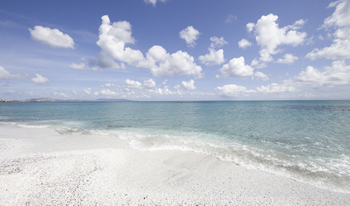Laboratory Experience
 Next, let's investigate ocean temperatures by completing a laboratory experience. Periodic climatic disturbances that affect much of the globe have been attributed to an unpredictable warm ocean current that originates in the western Pacific and it is called El Niño. This current moves from west to east across the middle of the Pacific Ocean. In this lab, you will analyze two maps of surface ocean temperatures in order to determine which year the El Niño event took place. Click the link, Laboratory Experience: Ocean Temperatures to complete the lab. You will need to submit this completed document later as an assignment in Blackboard. The assignment is titled, Laboratory Experience: Ocean Temperatures.
Next, let's investigate ocean temperatures by completing a laboratory experience. Periodic climatic disturbances that affect much of the globe have been attributed to an unpredictable warm ocean current that originates in the western Pacific and it is called El Niño. This current moves from west to east across the middle of the Pacific Ocean. In this lab, you will analyze two maps of surface ocean temperatures in order to determine which year the El Niño event took place. Click the link, Laboratory Experience: Ocean Temperatures to complete the lab. You will need to submit this completed document later as an assignment in Blackboard. The assignment is titled, Laboratory Experience: Ocean Temperatures.
Finally, let's explore the pH balance of water samples. You will complete another lab. In this laboratory experience you will analyze the pH of various water samples. Most of you will not be able to obtain ocean water for the laboratory on "Determining The pH Of Water Samples.” To complete this lab, just add a small amount of table salt to your tap water to simulate ocean water (3.5%).
 You must obtain four pieces of both red and blue litmus paper from a science teacher at your school. If you can not do this at school, look on the student forum for the data. You will be using appropriate laboratory apparatuses, technology, and techniques safely and accurately when conducting this investigation.
You must obtain four pieces of both red and blue litmus paper from a science teacher at your school. If you can not do this at school, look on the student forum for the data. You will be using appropriate laboratory apparatuses, technology, and techniques safely and accurately when conducting this investigation.
The health of a body of water depends, in part, on its maintenance of an appropriate pH level. The pH of a liquid is a measure of the acidity or alkalinity of that substance; pH levels are classified as either acidic, basic, or neutral, depending on their concentrations of hydrogen and hydroxyl ions. Chemical substances called indicators are used to determine pH.
A substance’s pH is measured on a scale that ranges from 0 to 14. In this lab, students will measure the pH of different water samples, and they will determine where the pH of ocean water falls within this range. (Ocean water is normally slightly basic, or alkaline.) Click the link, Laboratory Experience: pH Balance of Water Samples to complete the lab. You will need to submit this completed document later as an assignment in Blackboard. The assignment is titled, Laboratory Experience: pH Balance of Water Samples.
Now, click the menu item under Lessons in the navigation menu above called Currents to learn about ocean currents.
Photo Attribution
Description: Saline Beach
Source: Shutterstock.com
